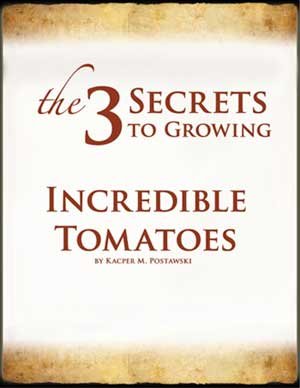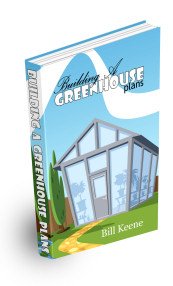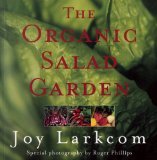
Miscellaneous Gardening Reminders for October
You are probably sick of hearing it... but get those slugs!!! The fall rains have once again gotten
slugs and snails moving through the garden. One last application of Slug bait
will eliminate a lot of slugs and prevent them from reproducing again this fall. Result: Fewer slugs next spring......
- This is the time of year to get a
soil test,
so that you can add lime as needed. (lime needs time to work and adjust your
soil's pH) If you're not sure how to take a soil sample, access our
Soil Sampling section,
and read about "Taking a Soil Sample" for step by step instructions.
Think you already know all you need to know?
Take the quiz and find out!
- When removing disease-infected plant parts or debris, do not
place refuse on the compost pile. The disease pathogens will live
in the compost pile and can be transmitted with the application
of compost to other garden beds, unless compost temperatures
reach above 180F and decomposition is complete.
- Late-fall tilling can help control insects, such as corn borer,
corn earworm, cucumber beetle, squash bug, and vine borer,
because it exposes overwintering insects to winter conditions. It
also makes spring soil preparation easier.
- Someday, it will be possible for plant taxonomists to classify
plants with incredible precision. Research is progressing on DNA
printing for various plant cultivars to allow positive
identification of a cultivar, as compared to the subjective
methods now used.
- When temperatures start dropping, be sure to check for any
chemicals that should not freeze. Move them to a safe storage
place where temperatures do not fall below 40F. Frozen liquids
can break jars and split plastic containers, spreading
concentrated chemicals within reach of children or pets.
- The birds will soon begin their winter migrations. Give them a helping
hand by providing them with some food for their long journey.
No one likes to travel on an empty stomach, and you may even
persuade a few of them to stick around for the winter, if they
know they have a reliable food source!
- One last effort at weeding will help to improve the appearance of your
garden throughout the winter. Any weed which you can eliminate from the
garden this fall will possibly prevent thousands of weed seeds from
sprouting in the garden next spring!
- Researchers at the Wye Research Farm in Maryland are making
some interesting discoveries. They have found the peak time for
nitrogen movement through the soil is in the winter months,
rather than in spring or summer when most nitrogen fertilizers
are applied. With peak movement of water-polluting nitrates being
from October through December, it pays, both in respect to the
environment and to improved soil conditions, to plant cover crops
that recover nitrogen from the soil. There is still time to sow a
winter wheat or rye cover.
- Clean your gutters and downspouts to remove fallen leaves
and other debris. Plugged gutters can cause serious damage to your
home as well as your garden when the winter rain and snow arrives.
- A good way to shell sunflower seeds is to rub them across an
old washboard. If the sunflower heads are large, break them into
two or three pieces to get a better grip on them and rub them on
the board as if you were washing clothes.
- Prepare for Thanksgiving bouquets by cutting chrysanthemum stems before
heavy frosts. Remove all leaves, and plunge stems into a pail of water leaving
only the blossoms exposed on top. Store the flowers in a cool garage or cellar
where they will not freeze. Make flower arrangements five to seven days before
the holiday.
- Do not apply quick-acting fertilizers while tilling the soil during the fall. Otherwise, the nitrogen will leach away before
spring. Materials that release nutrients slowly into the soil, such as rock phosphate, can be worked into the soil in the fall.
- Fall is an excellent time for taking soil samples in your lawn and garden. Soil tests will measure the acidity or alkalinity of
the soil and the levels of some of the major elements required for plant growth, such as phosphorus, magnesium, and potassium.
If lime is needed, now is a good time to apply it.
- In folklore, woolybear caterpillars are used to forecast the severity of the winter -- the more black on the woolybear, the colder. Conduct your own
research to see if it works. Though these insects feed on a variety of garden vegetables, they are not present in large numbers and are not pests of any
particular plant.
- Pebbles or crushed rocks make an attractive mulch and don't
attract rodents the way organic mulch can. With a combination of
rocks and a barrier layer (such as 3 or 4 sheets of newspaper, 4
mil. black plastic, or one of the new weed barrier fabrics)
underneath, weed control is assured for up to two years. Use
impermeable barrier layers (solid plastic) in situations where no
plant growth is desired. Around shrubs or trees, use a permeable
weed barrier (landscape fabric) that allows air and water to
reach the roots of desirable plants.
- Pine needles are like good building insulation -- full of air
spaces. They insulate the soil and make an ideal winter mulch for
perennial flowers, small fruit plants (especially strawberries),
and acid-loving shrubs and trees. Pine needles prevent alternate
freezing and thawing that may heave shallow-rooted plants out of
the ground, a problem especially serious with heavy soils.
- Treat magnolia and beech leaves for dried flower arrangements
in a mixture of 1/3 glycerine and 2/3 warm water. Crush stem ends
and place them in a jar of the mix for three weeks to produce a
rich, glossy-brown foliage.
- Mulches applied too early can do more harm than good. A mulch
is used to keep soil temperatures constant and prevent frost
heaving, not keep it warm. Therefore, it is best not to mulch
until the soil temperature has reached 32F.
- The bitter, golf-ball sized fruits of the trifoliate orange
(Poncirus trifoliate) may have some uses after all. Sections of
the fruit in hot tea have been reported as tastier than lemon,
and the entire fruit makes an attractive, miniature pomander when
studded with cloves and covered with spices.
OOOh!! And send in your requests for gardening catalogs
now, so that you will have something to read and ponder on those looooooong winter nights ahead!
"Tickle the earth with a hoe, it will laugh a harvest."
-- Author Unknown

FREE Garden Journal!!
Join "Garden Notes" and plan for Harvest Success as you track and record your gardening progress.
Your Free Personal Garden Journal has pages for jotting down notes on the seeds you start,
your new plantings, when you fertilized, and even a graph to plot a new garden.

FREE Report
If you're interested in growing tomatoes, you've got to read this free report, because you're about to find out
3 age-old, tried and tested, organic tomato growing secrets that turn any tomato plant into a thriving source of the
juiciest, most
mouth-watering tomatoes you've ever tasted.
I didn't want to see another internet "eBook" on growing anything, but my husband signed up for Kacper's free report and I have to tell you, it is WELL worth the read. If you think you know everything about growing tomatoes, I challenge you to read Kacper's report. HIGHLY recommended!
Free Report Here

What's New?
Discover How To Easily Build An Attractive And Affordable Greenhouse That Will Grow Anything In Any Conditions… Also, building your own greenhouse just makes economical sense. You can build a greenhouse at just a fraction of the cost of buying a pre-built one. Most pre-built greenhouse you buy need to be assembled anyway, you’re really just paying hugely inflated prices for the material.
Click Here!
Book of the Month

Based entirely on organic gardening principles. This says it all. Joy's book has been fully revised and updated and includes extensive new reading, particularly
on oriental and fruiting vegetables, and did I mention, is now entirely based on organic gardening practices.
Read More...






